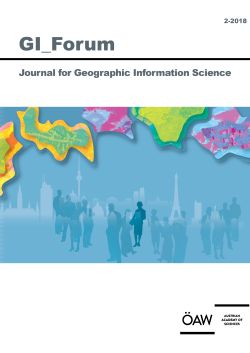Adrijana Car – Thomas Jekel – Josef Strobl – Gerald Griesebner (Eds.)
GI_Forum 2018, Volume 6, Issue 2
Journal for Geographic Information Science
Tilo Felgenhauer
S. 97 - 102
doi:
10.1553/giscience2018_02_s97
Verlag der Österreichischen Akademie der Wissenschaften
doi:
10.1553/giscience2018_02_s97
Abstract:
Geoinformation is represented in increasing numbers of different forms, with heterogeneous social and cultural implications. This paper highlights the merits as well as the ambivalence of the social (especially) and political effects of the widespread expansion and growing importance of (volunteered) geographic information. This general overview of the basic symbolic forms in which geoinformation appears distinguishes between three areas of spatial semantics: while technological systems address space mainly in numerical terms, the user refers to space by ego-centered deixis, while society and culture provide the established everyday language of toponyms. The main argument, based on this categorization, stresses the importance of diversity and transparency in acting and interacting with geoinformation and geomedia in order to promote empowerment, education and reflection.
volunteered geographic information, critical GIS, interaction practices, interface design, spatial language
Published Online:
2018/12/10 08:04:38
Object Identifier:
0xc1aa5576 0x003a1fd3
Rights:https://creativecommons.org/licenses/by-nd/4.0/
GI_Forum publishes high quality original research across the transdisciplinary field of Geographic Information Science (GIScience). The journal provides a platform for dialogue among GI-Scientists and educators, technologists and critical thinkers in an ongoing effort to advance the field and ultimately contribute to the creation of an informed GISociety. Submissions concentrate on innovation in education, science, methodology and technologies in the spatial domain and their role towards a more just, ethical and sustainable science and society. GI_Forum implements the policy of open access publication after a double-blind peer review process through a highly international team of seasoned scientists for quality assurance. Special emphasis is put on actively supporting young scientists through formative reviews of their submissions. Only English language contributions are published.
Starting 2016, GI_Forum publishes two issues a Year.
Joumal Information is available at: GI-Forum
GI_Forum is listed on the Directory of Open Access Journals (DOAJ)




 Home
Home Print
Print
 References
References
 Share
Share
